Trauma and substance abuse are two deeply interconnected issues that have a profound impact on mental health. You may be surprised to learn how often these challenges go hand in hand, creating a complex web of pain and coping mechanisms. When individuals experience traumatic events, they frequently turn to drugs or alcohol as a way to numb their emotional distress, leading to a cycle of addiction that can be difficult to break.
In this article, you’ll discover the vital link between trauma and substance abuse and how they feed into each other. We’ll explore the prevalence of co-occurring disorders, dive into the relationship between PTSD and addiction, and look at evidence-based treatments that can help. By understanding these connections, you’ll be better equipped to recognize the signs and seek appropriate help for yourself or your loved ones struggling with these intertwined issues.
The Prevalence of Co-Occurring Trauma and Substance Use Disorders
Statistical Overview
You might be surprised to learn how common co-occurring trauma and substance use disorders are. Studies show that 44.6% of individuals with lifetime PTSD also meet the criteria for an alcohol use disorder (AUD) or substance use disorder (SUD) . Among veterans, those with PTSD are two times more likely to have an AUD and three times more likely to have a drug use disorder. In 2018, 21.2 million individuals in the United States met the criteria for a substance-related disorder.
High-Risk Populations
Certain groups face a higher risk of experiencing both trauma and substance abuse. For instance, up to 59% of young people with PTSD develop substance abuse problems. LGBTQ youth and those living with intellectual and developmental disabilities experience trauma at higher rates than their peers. Additionally, children of military and veteran families face unique challenges related to military life and culture.
Societal Impact
The co-occurrence of trauma and substance use disorders has a significant impact on society. It leads to persistent negative consequences, including chronic health problems, dysfunctional family environments, and harmful economic impacts. Individuals with both disorders often have poorer treatment outcomes and more additional psychiatric problems than those with just one disorder. This translates into higher costs for the healthcare system, emphasizing the need for appropriate treatment.
Dual Diagnosis: PTSD and Addiction
You might be surprised to learn how common co-occurring PTSD and substance use disorders are. Studies show that 40.9% of individuals with an SUD had a comorbid lifetime mood disorder, while 29.9% had a comorbid lifetime anxiety disorder. People seeking treatment for PTSD are 14 times more likely also to be diagnosed with Substance Use Disorder (SUD).
Symptoms of PTSD
PTSD is a severe anxiety disorder that occurs when you witness or experience a traumatic event. It can lead to persistent negative consequences, including chronic health problems and dysfunctional family environments.
Substance Use as Self-Medication
Many individuals with PTSD turn to drugs or alcohol to cope with their symptoms. This self-medication can lead to a cycle of addiction. For example, about 6 out of 10 Veterans with PTSD smoke, compared to 3 out of 10 without a PTSD diagnosis.
Challenges in Treatment
Treating co-occurring PTSD and SUD presents unique challenges. Patients often have poorer treatment outcomes and more additional psychiatric problems than those with just one disorder. However, integrated treatment approaches that address both PTSD and SUD simultaneously have shown promise in reducing symptoms and substance use.
Evidence-Based Treatment Modalities
Cognitive Behavioral Therapy (CBT)
CBT has shown effectiveness in treating substance use disorders (SUDs). It targets maladaptive behavioral patterns, enhances motivation for change, and develops healthy coping skills. CBT focuses on changing negative thought patterns and implementing coping strategies, making it particularly useful for relapse prevention.
EMDR
Eye Movement Desensitization and Reprocessing (EMDR) therapy aims to help you reprocess traumatic memories. It’s often used in drug and alcohol rehabilitation programs due to the strong association between trauma and SUDs. EMDR has shown promise in improving various addictions, though more research is needed.
Pharmacological Interventions
Selective serotonin reuptake inhibitors (SSRIs) and serotonin-norepinephrine reuptake inhibitors (SNRIs) are considered first-line pharmacotherapy for PTSD. Currently, only paroxetine and sertraline are FDA-approved for PTSD treatment. However, it’s important to note that the positive effects of pharmacotherapy can diminish over time.
Conclusion
The interplay between trauma and substance abuse presents a complex challenge with far-reaching consequences. The high prevalence of co-occurring disorders, especially among vulnerable populations, highlights the need for comprehensive treatment approaches. Integrated therapies that address both trauma and addiction simultaneously have shown promise in improving outcomes and breaking the cycle of self-medication.
For those struggling with the effects of trauma and substance abuse, help is available. Resilience Behavioral Health in Massachusetts offers specialized programs to support individuals on their journey to recovery. Their team of experts understands the unique challenges of dual diagnosis and provides personalized care to address both trauma and addiction. To take the first step towards healing, contact Resilience Behavioral Health and explore their tailored treatment options.

